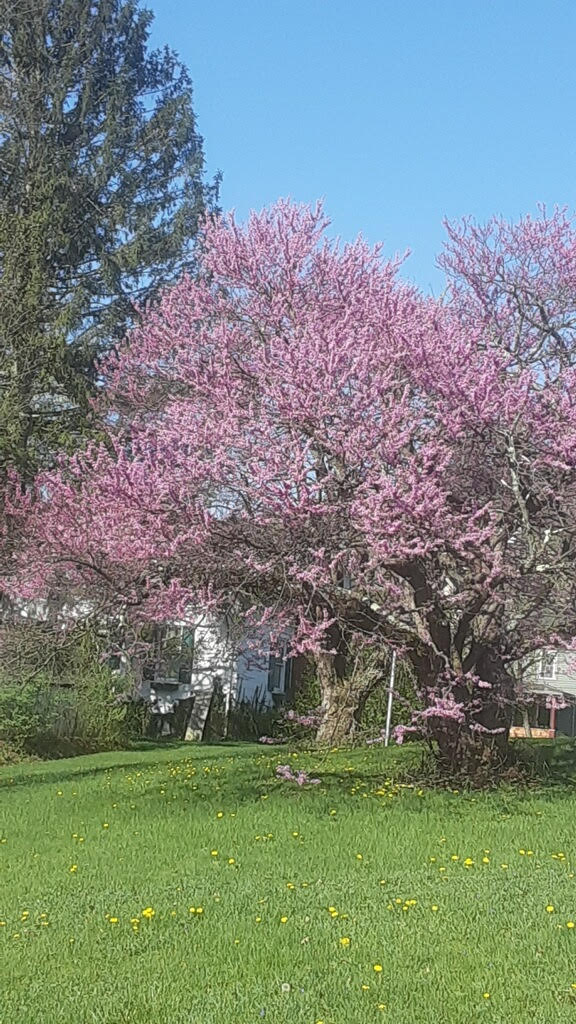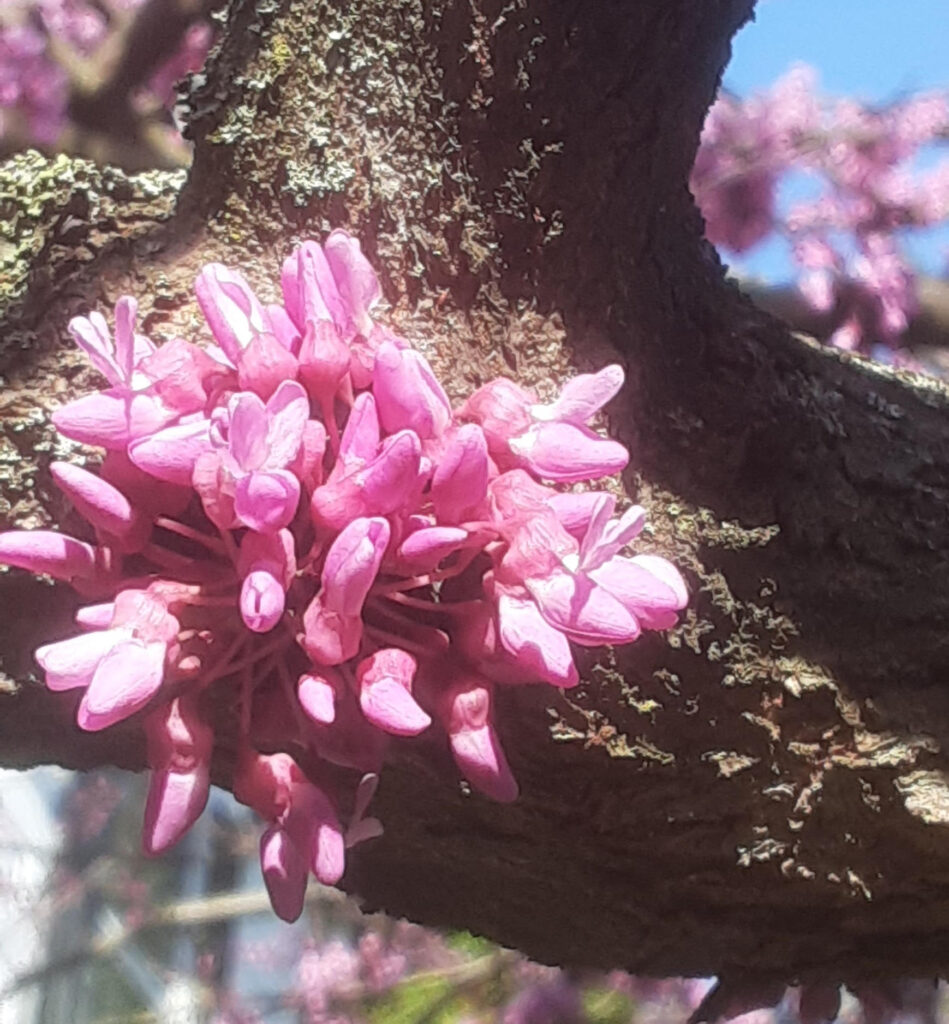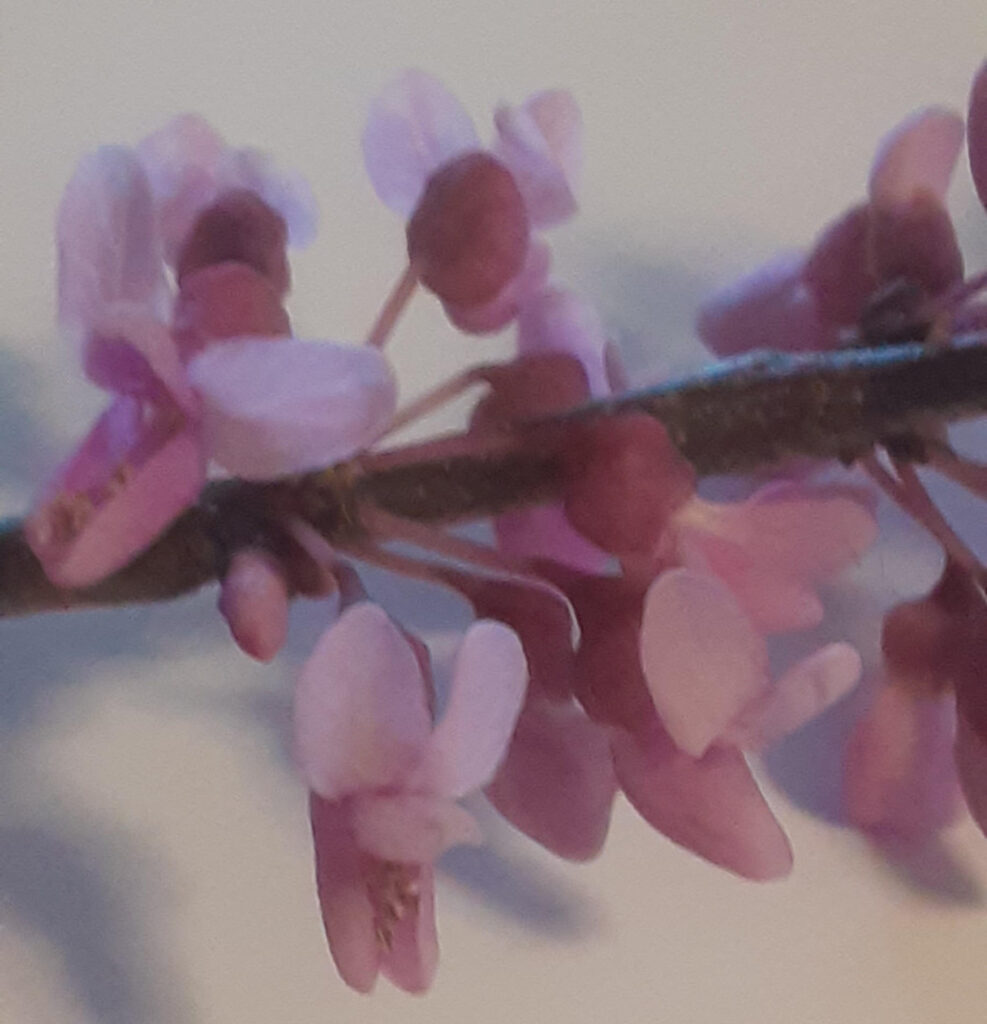By Susan Sprout
Going out and about, you have probably noticed our wonderful Eastern Redbud blooming now in Central Pennsylvania. So attractive and conspicuous with those magenta blossoms decorating all the branches! They certainly stand out whether they are growing along a country road or in people’s yards. A closer look reveals that the flowers have appeared before the leaves and are coming straight out of the bark. Growing in little clusters as they do, the branches look upholstered with the blossoms! A common folk tradition stemming from their early arrival is to take some branches inside the house “to drive the winter out.”

Eastern Redbud (Cercis canadensis) is considered a shrub or small tree and a member of the Pea or Legume Family, Fabaceae. It is a native species as are two close relatives, Honey Locust tree and Kentucky Coffeetree. Redbud’s flowers are pea flower-shaped with a lower keel like a sailboat, and two vertical wings spreading out above like sails. The buds can remain unopened for quite a while and retain a darker pink color. As they mature, the keel splits open revealing two rows of pollen-bearing stamens and the female receptacle called the stigma that receives pollen. At this time, they become a paler pink color. After pollination, groups of two-to-four-inch seed pods that resemble those of garden peas begin growing from the flowers and dangle downward. Starting out green, they mature turning dark brown to black and split open along one side to release four to ten flat bean-like seeds.

Redbud leaves are bright green and heart-shaped with smooth edges and pointed tips. Three to five inches in diameter, they grow alternately on the branches or twigs and have five to seven veins radiating from the leaf base where it connects to the stem. Underneath, they are a lighter color and have some tufts of hair where the veins meet.

Although slightly sour to taste, Redbud flowers are edible and high in Vitamin C. Several sources reported their use in salads and pancakes. In folk medicine, tree bark was used to treat dysentery. Our colonial ancestors used the green twigs to season wild game. Funny thing, the game, AKA venison on the hoof, enjoys those same green twigs as browse!

